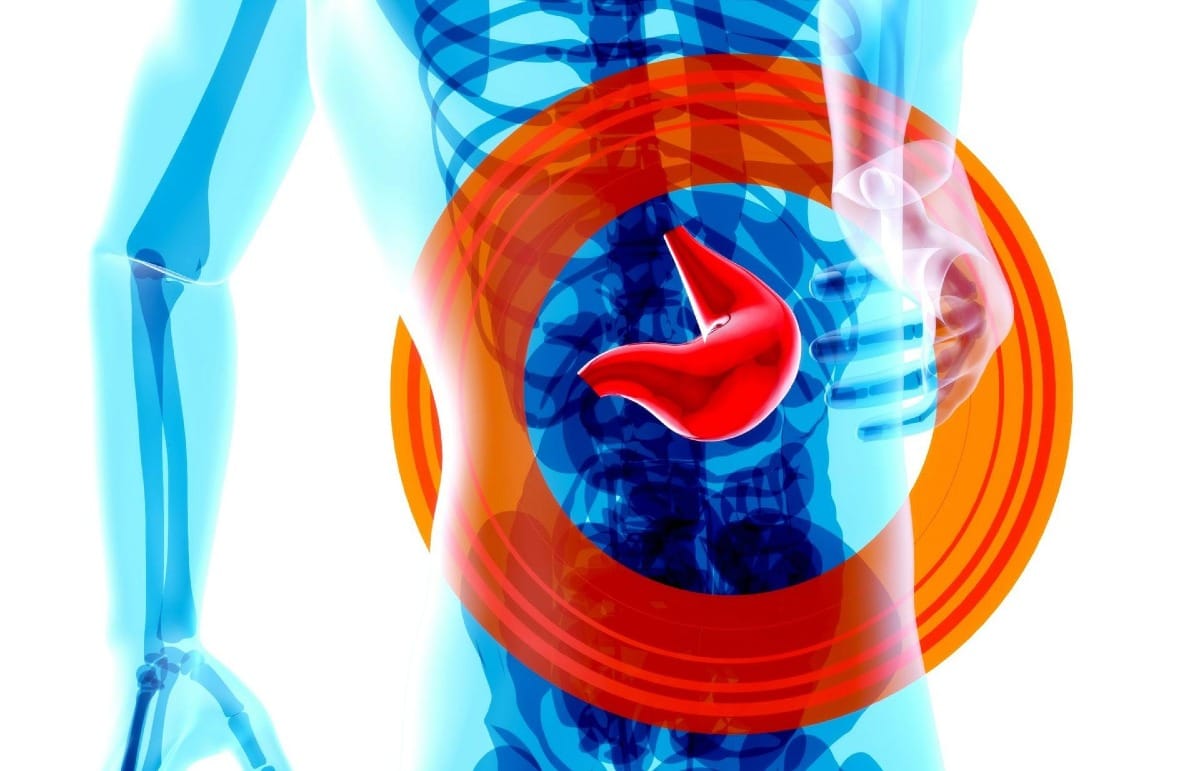Based on reports from Houston Methodist, gut microbiome testing has emerged as a potential tool for personalized nutrition, offering insights into the trillions of microorganisms residing in our digestive tracts. While these tests can map an individual's unique microbial landscape, experts caution that their clinical utility remains debatable, as there is currently no established benchmark for a "normal" gut microbiome.
Understanding the Gut Microbiome
The gut microbiome refers to the trillions of microorganisms, including bacteria, viruses, and fungi, that reside in the human intestinal tract 1 2. This complex ecosystem plays a crucial role in various aspects of human health, extending far beyond digestion.
The microbiome is highly individualized, with its composition influenced by factors such as diet, lifestyle, environment, and genetics 1. This uniqueness can explain why dietary responses can vary significantly between individuals, even identical twins 2.
The gut microbiome contributes to numerous bodily functions:
- Digestion and metabolism: Gut microbes help break down complex carbohydrates and produce essential nutrients like vitamins B and K 2.
- Immune system regulation: The microbiome plays a vital role in shaping and educating the immune system, influencing its responses throughout life 3.
- Brain-gut axis: There's growing evidence of a bidirectional communication between the gut microbiome and the brain, potentially affecting mental health and cognitive function 3.
- Inflammation control: A balanced microbiome helps regulate inflammation levels in the body, which is crucial for overall health 1.
- Disease prevention: Imbalances in the gut microbiome, known as dysbiosis, have been linked to various conditions, including inflammatory bowel disease (IBD), irritable bowel syndrome (IBS), obesity, and even certain cancers 1 3.
Recent research has shown that the gut microbiome can influence how individuals respond to different foods. For example, studies have demonstrated that unique gut microbial profiles can predict postprandial blood glucose levels in response to specific foods 4. This finding underscores the potential for microbiome-based personalized nutrition strategies.
Understanding the gut microbiome is an ongoing process in scientific research. While we have made significant strides in mapping its composition and understanding its functions, there is still much to learn about what constitutes a "healthy" microbiome. The field of microbiome research is rapidly evolving, with new insights emerging regularly that may reshape our approach to nutrition and health 1 5.
As our knowledge of the gut microbiome expands, it opens up new possibilities for personalized health interventions. By analyzing an individual's unique microbial profile, it may be possible to develop tailored dietary recommendations that optimize gut health and, by extension, overall wellbeing 2 4.
Sources:
- (1) Should You Do a Gut Microbiome Test? - Houston Methodist
- (2) What is a gut microbiome test and how can it help you? - ZOE
- (3) Gut microbiome: Experts share what it is, how it affects health
- (4) Personalized Diets based on the Gut Microbiome as a Target ... - NCBI
- (5) The presentation of gut microbiome-based personalized nutrition on ...
Microbiome Mapping Process
Microbiome mapping is a complex process that involves several key steps to analyze the composition and function of an individual's gut microbiome. Here's a detailed overview of the typical microbiome mapping process:
- Sample Collection:
The process begins with collecting a stool sample from the individual. Most at-home gut microbiome tests provide a special container and detailed instructions for sample collection 1. It's crucial to follow these instructions carefully to ensure the sample's integrity. - DNA Extraction:
Once the sample reaches the laboratory, scientists extract DNA from the microorganisms present in the stool. This step is critical as it isolates the genetic material that will be analyzed 2. - Sequencing:
The extracted DNA is then sequenced using advanced technologies. Two main approaches are commonly used:a) 16S rRNA Sequencing: This method targets a specific gene (16S rRNA) present in all bacteria, allowing for the identification of bacterial species present in the sample.b) Metagenomic Sequencing: This more comprehensive approach sequences all genetic material in the sample, providing information about bacteria, viruses, fungi, and their potential functions 2. - Data Analysis:
The sequencing data is processed using bioinformatics tools and algorithms. This step involves:a) Quality Control: Removing low-quality reads and contaminants.
b) Assembly: Piecing together short DNA sequences into longer contiguous sequences.
c) Taxonomic Classification: Identifying the microorganisms present based on their DNA sequences.
d) Functional Analysis: Predicting the potential functions of the identified microorganisms 2. - Interpretation:
The analyzed data is then interpreted to provide insights into the individual's gut microbiome. This may include:a) Microbial Diversity: Assessing the variety of microorganisms present.
b) Abundance of Specific Microbes: Identifying which microbes are present in high or low numbers.
c) Functional Potential: Predicting the metabolic capabilities of the microbiome.
d) Comparison to Reference Databases: Comparing the individual's microbiome to databases of healthy and diseased microbiomes 3. - Report Generation:
Based on the interpretation, a detailed report is generated. This typically includes:a) Overview of the individual's microbiome composition.
b) Identification of potentially beneficial or harmful microbes.
c) Comparison to population averages or ideal profiles.
d) Personalized dietary and lifestyle recommendations 1 3. - Follow-up and Recommendations:
Some companies offer personalized consultations to explain the results and provide tailored advice. This may include:a) Dietary recommendations to promote beneficial microbes.
b) Suggestions for prebiotic or probiotic supplements.
c) Lifestyle modifications to improve gut health 1 3.
It's important to note that while microbiome mapping can provide valuable insights, the field is still evolving. The interpretation of results and subsequent recommendations can vary between providers, and there's currently no standardized benchmark for a "normal" gut microbiome 1. Additionally, the U.S. Food and Drug Administration (FDA) has not approved these tests for diagnosing or treating specific health conditions 1.
As research progresses, we can expect more refined and standardized approaches to microbiome mapping. Future developments may include more precise correlations between microbial patterns and health outcomes, as well as the integration of microbiome data with other personalized health information for a more comprehensive approach to health management 4 5.
Sources:
- (1) Should You Do a Gut Microbiome Test? - Houston Methodist
- (2) Personalized Diets based on the Gut Microbiome as a Target ... - NCBI
- (3) What is a gut microbiome test and how can it help you? - ZOE
- (4) Gut microbiome: Experts share what it is, how it affects health
- (5) Gut Microbiome Analysis for Personalized Nutrition: The State of ...
Diet Customization Benefits
Customizing your diet based on microbiome mapping offers several potential benefits for gut health and overall wellbeing:
- Improved Digestive Function: By tailoring your diet to your unique gut microbiome, you can potentially enhance nutrient absorption and reduce digestive discomfort. Research has shown that individuals have different responses to the same foods based on their gut microbial composition 1. A personalized approach can help identify foods that are most beneficial for your specific gut ecosystem.
- Enhanced Immune Function: The gut microbiome plays a crucial role in shaping and educating the immune system 2. A diet customized to support a diverse and balanced microbiome may help strengthen immune responses and reduce inflammation throughout the body.
- Better Weight Management: Studies have linked certain gut microbial patterns to obesity and metabolic disorders 3. By adjusting your diet to promote beneficial bacteria, you may be able to support healthier weight management and metabolic function.
- Optimized Blood Sugar Control: Research has demonstrated that individual gut microbial profiles can predict postprandial blood glucose responses to different foods 1. This insight allows for dietary recommendations that can help stabilize blood sugar levels, potentially reducing the risk of type 2 diabetes and other metabolic disorders.
- Personalized Probiotic and Prebiotic Recommendations: Microbiome mapping can guide more targeted use of probiotics and prebiotics. Instead of a one-size-fits-all approach, you can focus on specific strains or fibers that are most likely to benefit your unique gut ecosystem 4.
- Potential Alleviation of Gastrointestinal Symptoms: For individuals with conditions like irritable bowel syndrome (IBS) or inflammatory bowel disease (IBD), a customized diet based on microbiome analysis may help identify trigger foods and suggest alternatives that could reduce symptoms 5.
- Support for Mental Health: Given the growing understanding of the gut-brain axis, dietary changes that positively influence the microbiome may have beneficial effects on mental health and cognitive function 6.
- Increased Nutrient Synthesis: Certain gut bacteria are capable of producing essential nutrients like vitamins B and K. A customized diet can help support the growth of these beneficial microbes, potentially improving your body's ability to synthesize these important nutrients 7.
- Enhanced Athletic Performance: Emerging research suggests that the gut microbiome may influence athletic performance and recovery. A personalized diet could potentially optimize the gut environment to support physical performance goals 8.
- Long-term Disease Prevention: By promoting a healthier gut microbiome through personalized nutrition, you may be able to reduce your risk of various chronic diseases that have been associated with gut dysbiosis, including certain cancers, autoimmune disorders, and cardiovascular diseases.
While these benefits are promising, it's important to note that microbiome science is still evolving. The full extent of how dietary changes impact the microbiome and subsequent health outcomes is not yet fully understood. As research progresses, we can expect more refined and evidence-based approaches to microbiome-guided nutrition.
Sources:
- (1) Should You Do a Gut Microbiome Test? - Houston Methodist
- (2) What is a gut microbiome test and how can it help you? - ZOE
- (3) Personalized Diets based on the Gut Microbiome as a Target ... - NCBI
- (4) The presentation of gut microbiome-based personalized nutrition on ...
- (5) Gut microbiota: the new frontier in Alzheimer's disease research and ...
- (6) Gut microbiome: Experts share what it is, how it affects health
- (7) Gut Microbiome Analysis for Personalized Nutrition: The State of ...
- (8) Microbiome Research Is Becoming the Key to Better Understanding ...
Challenges and Future Insights
While microbiome mapping and personalized nutrition based on gut health show great promise, there are several challenges and future directions to consider:
Lack of Standardization: Currently, there is no consensus on what constitutes a "normal" or "healthy" gut microbiome. This lack of standardization makes it difficult to interpret test results consistently across different providers 1. Researchers are working towards establishing benchmarks, but the high variability between individuals complicates this process.
Complexity of Microbiome-Diet Interactions: The relationship between diet and the gut microbiome is bidirectional and highly complex. While we know that diet influences microbial composition, the exact mechanisms and long-term effects of dietary changes on the microbiome are not fully understood 2. Future research needs to elucidate these complex interactions to provide more accurate dietary recommendations.
Limited Clinical Validation: Many gut microbiome tests available to consumers have not been clinically validated for their utility in assessing overall gut health 1. The U.S. Food and Drug Administration (FDA) has not approved these tests for diagnosing or treating specific health conditions. More rigorous clinical trials are needed to establish the efficacy of microbiome-based dietary interventions.
Temporal Variability: The gut microbiome can fluctuate over time due to various factors such as stress, sleep patterns, and short-term dietary changes 3. This variability poses challenges in interpreting single time-point measurements and necessitates the development of longitudinal monitoring approaches.
Integration with Other Health Data: To provide truly personalized nutrition advice, microbiome data needs to be integrated with other health parameters such as genetics, metabolomics, and lifestyle factors 4. Future advancements in data integration and analysis will likely lead to more comprehensive and accurate personalized health recommendations.
Ethical and Privacy Concerns: As with any personal health data, there are concerns about privacy and the potential misuse of microbiome information. Establishing robust ethical guidelines and data protection measures will be crucial as the field advances.
Improving Predictive Models: Current machine learning approaches for predicting individual responses to diet based on microbiome composition are still in their infancy. Larger datasets and more sophisticated algorithms are needed to improve the accuracy and reliability of these predictions 2.
Functional Analysis: While current techniques can identify which microbes are present in the gut, understanding their functional roles is equally important. Advancements in functional metagenomics and metabolomics will provide deeper insights into how the microbiome affects health and how it can be modulated through diet 5.
Personalized Probiotics and Prebiotics: Future research may lead to the development of highly personalized probiotic and prebiotic formulations tailored to an individual's specific microbiome profile 6.
Long-term Studies: Most current studies on microbiome-based dietary interventions are short-term. Long-term studies are needed to assess the sustainability and long-term health impacts of personalized nutrition strategies based on microbiome mapping 7.
As the field of microbiome research continues to evolve, these challenges are likely to be addressed, leading to more refined and effective approaches to personalized nutrition. The integration of microbiome science with other areas of personalized medicine holds great potential for improving overall health outcomes and disease prevention strategies.
Sources:
- (1) Should You Do a Gut Microbiome Test? - Houston Methodist
- (2) Personalized Diets based on the Gut Microbiome as a Target ... - NCBI
- (3) What is a gut microbiome test and how can it help you? - ZOE
- (4) The presentation of gut microbiome-based personalized nutrition on ...
- (5) Gut microbiota: the new frontier in Alzheimer's disease research and ...
- (6) Gut microbiome: Experts share what it is, how it affects health
- (7) Gut Microbiome Analysis for Personalized Nutrition: The State of ...














Member discussion